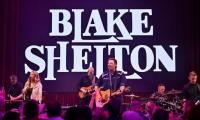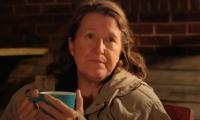She was a very young girl – only aged three – but she remembers clearly the crowds pouring into the living room in Baton Rouge where her father, a Baptist pastor, was coordinating the first major civil rights protest the United States had ever seen.
“It was a very turbulent time,” said Dr Jemison Pollard, who has vivid recollections of white-hooded Ku Klux Klansmen arriving to burn crosses on her front lawn.
“In Baton Rouge especially. Baton Rouge has always been at the forefront of civil rights.”
That was 1953. But the capital city of Louisiana is once again at the forefront of a painful and uniquely American debate about race, protest and human rights.
The current upsurge began early this month, with the July 5 shooting of Alton Sterling – a black 37-year-old CD seller who was pinned to the floor by two white police officers and shot. They claim he was reaching for his gun; his supporters claim he posed no threat.
A day later a black man in Minnesota was shot dead by police at a traffic stop; the following day, five police officers in Dallas were killed in retaliation for the shootings.
Protests in Baton Rouge turned toxic; 150 people were arrested last weekend, as heavily-armed police seized demonstrators in scenes beamed around the world.
Then, on Sunday, the terrible wheel turned again: the spotlight once again on Baton Rouge, with the killing of three police officers by another black man enraged at authority, and angry at police shootings.
“We don’t know why he chose Baton Rouge,” said Colonel Mike Edmonson of Louisiana state police, speaking at an emotional press conference on Monday.
“We don’t know whether he had help. “But we know this much: the person who killed those police officers was killed by the police.”
For Dr Jemison Pollard, the reopening of old wounds is painful – but not entirely unexpected.
Her father, T J Jemison, was Martin Luther King’s mentor and organised the first bus boycott, to protest against black people being forbidden from sitting on seats reserved for white people – even when the “whites only” section was empty.
Jemison and his colleagues arranged for the black community to stop using the buses – and, given that they made up the majority of the bus users, the effect was drastic. Women from his church gathered at the Jemison house to coordinate car sharing, and a black businessman, Horatio Thompson – the first African American in the South to own an Esso franchise – provided fuel.
Within eight days the bus company had backed down, and allowed blacks to sit on the white seats. Martin Luther King told in his autobiography how this first ever bus boycott was the blueprint for the much more famous Montgomery boycott, in 1955.
“Dad was ten years older, so he was a mentor to Martin,” recalled Dr Jemison Pollard. “Then he left the civil rights leadership, as he went on to head up the National Baptist Convention.
“So he was always active, but not one of the leaders. He left that to Martin.”
Her father, born in Selma, retired in 2003, after 54 years preaching in Baton Rouge. He died in 2013, aged 95.
“I know he would have been incredibly saddened by what is happening now,” she said, speaking to The Telegraph from her home in Houston, Texas, where she is a university professor.
“We respect police – I know I do, and Daddy definitely did – but we will continue to see protests until we have fairness.
“I’m not surprised at all that these protests are happening, and above all here. People have harboured this animosity for a long time. And they remember protests as something that helped get things moving.
“Things have to change. We know that no one should touch the police, but we also know that they must be held accountable – and frequently they are not.
Dr Jemison Pollard believes that, far from healing racial scars, having a black man in the White House has only inflamed the situation - empowering black people, and thus enraging white supremacists, to spark a dangerous vortex of violence. Johnetta Elzie agrees.
One of the leading lights in the Black Lives Matter movement, she was inspired to protest after her friend was shot dead by police in St Louis.
Travelling to Baton Rouge to encourage and coordinate the demonstrations, beside her colleague DeRay Mckesson – who was arrested – she said race relations were perilous.
“There’s a whole lot of people angry at having the Obama family there,” she said. “It has certainly focused the anger.”
Sitting in a café in central Baton Rouge, fresh from meeting young local protesters to discuss the best ways to make their voices heard, she admitted demonstrating took its toll. She helps train people in how to protest peacefully, within the law, and communicate their goals.
It is not easy; she tells of having milk poured over her, and being insulted frequently, with the “N-word” bandied about.
“But we’re all here because of what we have been through. Everyone you will talk to has experience of being pulled over, harassed. And it has to stop.”
Baton Rouge police have long struggled with community relations, despite having a large student population and plenty of work, provided by the numerous chemical plants, large Exxon Mobil facilities, and blossoming IT industry.
The force protecting the city of 230,000, where 55 per cent of the population is black, is 67 per cent white, according to local newspaper The Advocate.
That makes it one of the least representative forces in the country.
In 1980 the city was put under a federal consent decree to improve its minority recruiting, when it was found that about 10 per cent of the department’s 516 employees were black.
The situation has improved since then and Carl Dabadie, the chief of police, said that during the last four academy classes 67 to 75 per cent of the cadets have been people of colour.
Veteran cricket journalist Sharda Ugra said the sport is used as a vehicle for a muscular nationalism
The UAE saw record rainfall with 254 mm falling in less than 24 hours in Al Ain, a city on the UAE-Oman border
Prime Minister Anthony Albanese singled Guerot out for praise on Tuesday
The bill passed a vote in Britain’s parliament with 383 in favour and 67 against
The Supreme Court has previously refused to accept two formal apologies from Ramdev and his firm’s co-founder...







